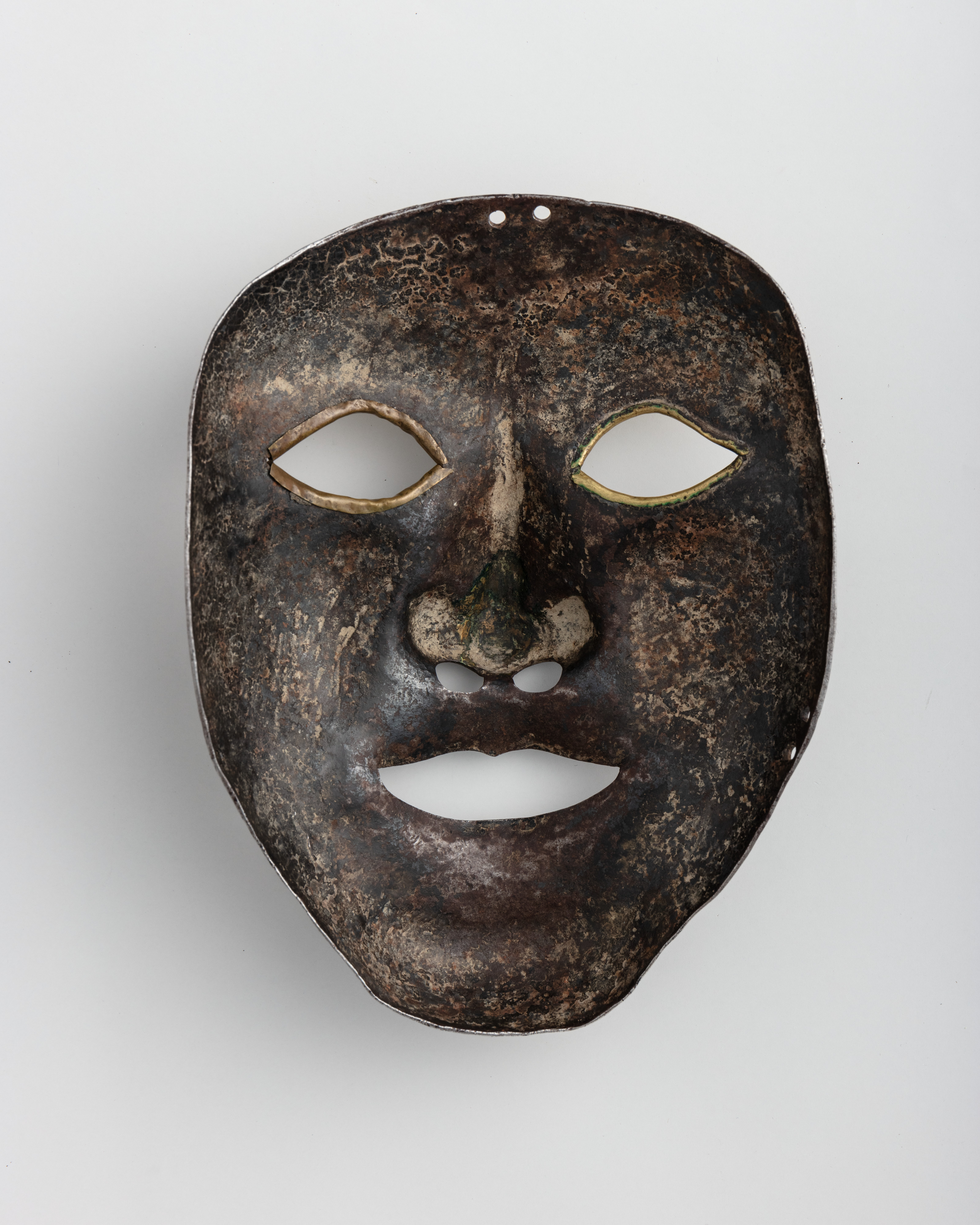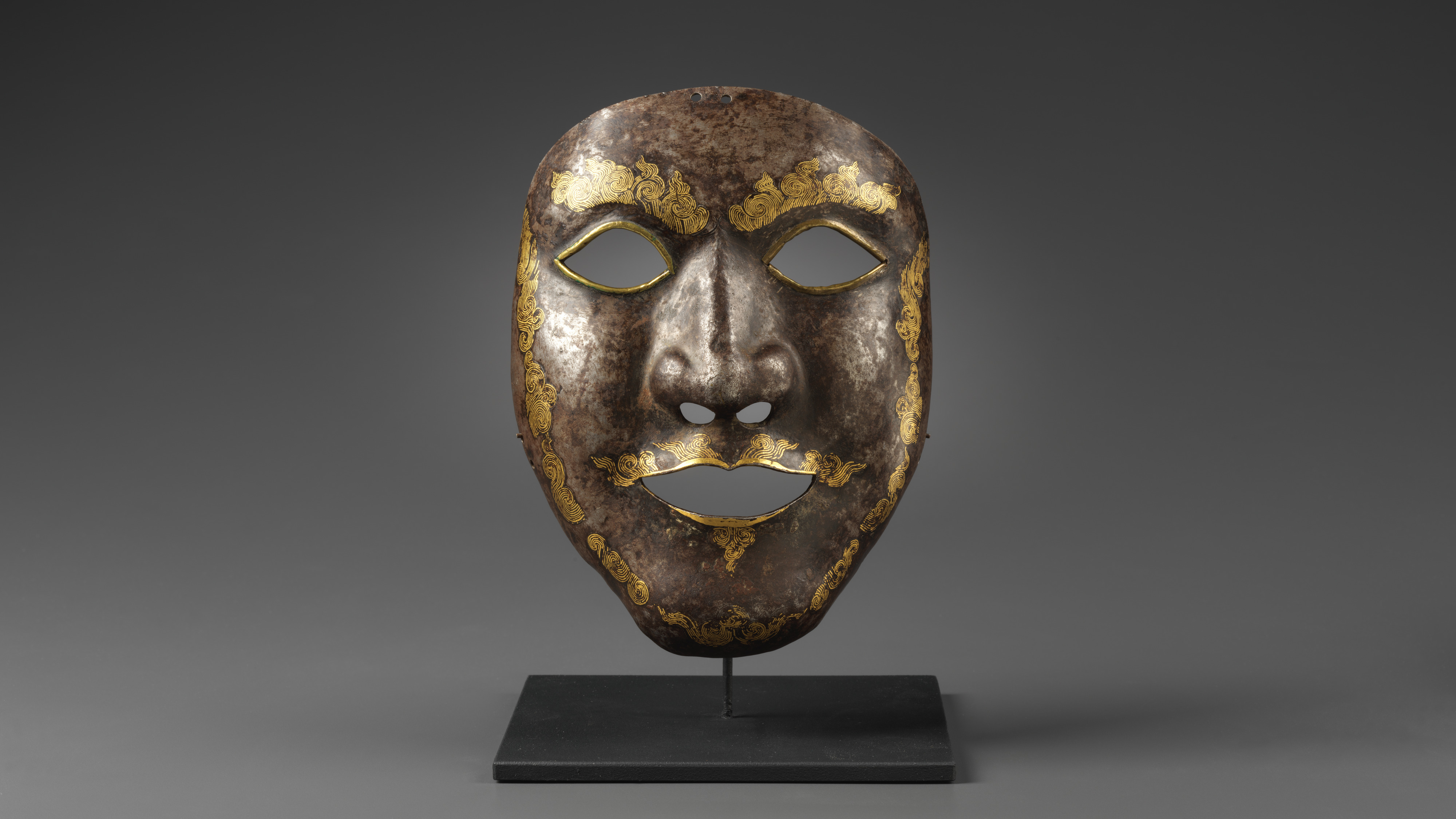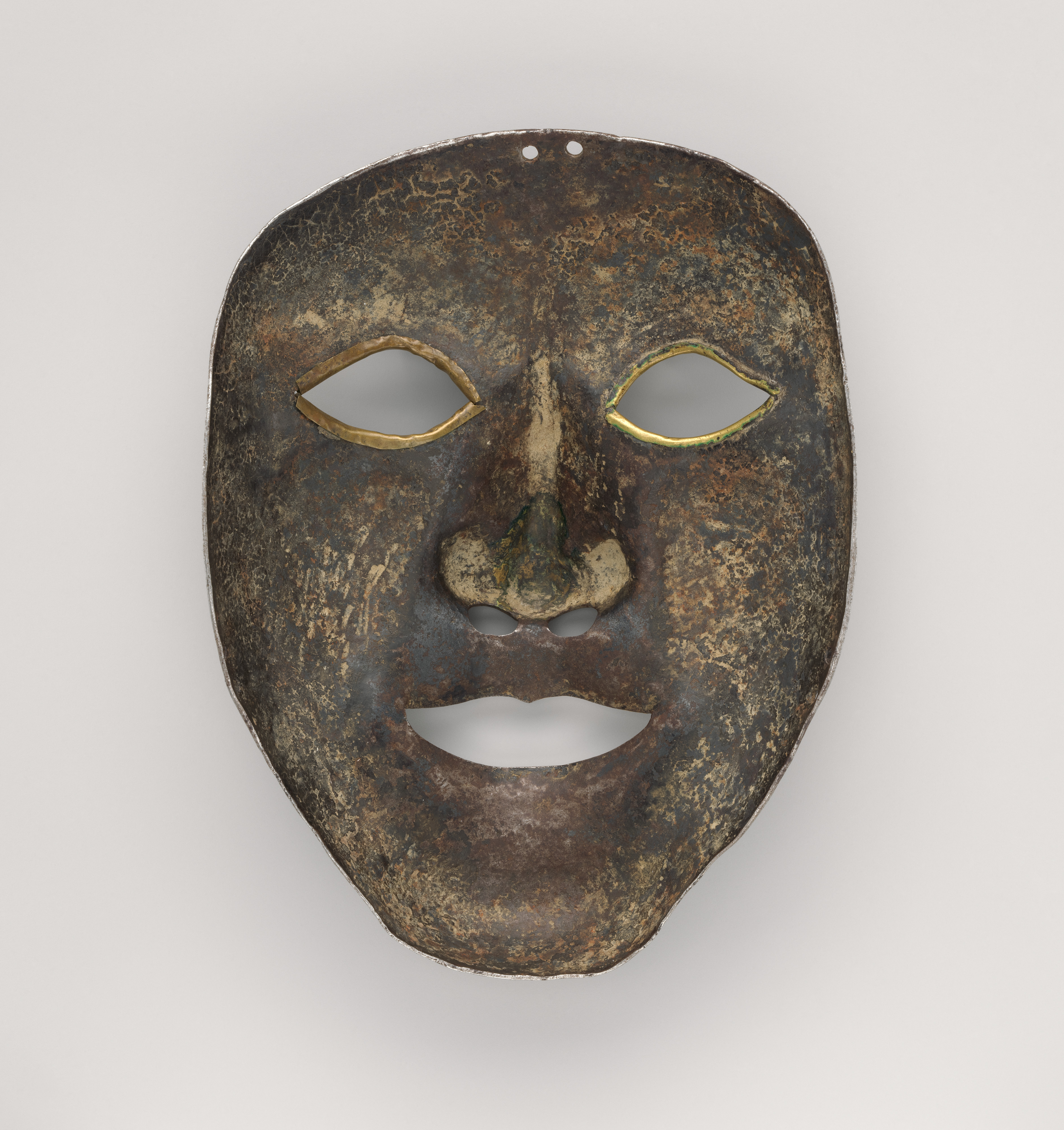War Mask
This exceptionally rare war mask is one of only two known examples from Tibet. It is subtly forged in iron to represent a human or divine visage, boldly damascened in gold with flame-like tendrils for eyebrows, around the mouth, and framing the face. By contrast, the second example, although equally rare and important, and also in The Met’s collection (acc. no. 2007.10), is intentionally plain in its design and virtually without decoration. War masks made of metal, usually iron or copper alloys, and intended specifically as armor, existed in many cultures for nearly 2,000 years, from Roman Britain in the 1st century A.D. to Japan up to the end of the Edo period in the late nineteenth century. They were probably introduced into Tibet by the Mongols by the fourteenth century and were used in Central Asia and West Asia until at least the sixteenth century. While many types of Tibetan dance and ritual masks exist, this mask is the only known example of a decorated iron war mask from Tibet.
Due to rights restrictions, this image cannot be enlarged, viewed at full screen, or downloaded.
This artwork is meant to be viewed from right to left. Scroll left to view more.








